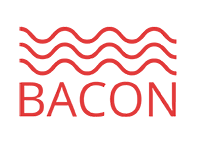How do I calculate my restaurant food cost?
Food Cost is one of the things that I get contacted the most about. Restaurant financials can get confusing. I get that and to help with the complexity, I created software called clickBACON that does the work for you. Check it out if you don’t want to do the math yourself!
There are 6 things you should know about food costing. Watch the video at the bottom of the page where I take a deep dive into Restaurant Food Costing.
1.) Item costing. It’s a very simple formula: the cost to produce an item divided by the selling price (Item Cost/Selling Price= Cost of Goods Sold/Food Cost). You do not need a special excel spreadsheet for this or even food cost calculator. All you need is your invoice and a calculator.
2.) Period costing. This is the Cost of Goods Sold over a period of a week, month, year, or quarter. To calculate: Divide your Total Purchases for a certain period by the Total Sales for that same period (Total Purchases/Total Sales). What’s important here is that when you’re talking about Food Cost, you’re only taking food purchases divided by food sales, not total sales, but food sales.
3.) Simple method vs. Inventory method vs Rolling method. I personally like the simple method (Purchases/Sales), but if you’re going to use the simple method, then use it for a longer period of time. One week or one month isn’t enough. You need to do this for a three month period or a six month period to counterbalance the waves in the month, days of the week, days of deliveries, etc. The method I prefer even more than the Simple Method is a Rolling Method, where we use completed weeks. I prefer a 4-week rolling where we take the last four completed weeks with all that data and use that rather than ending midweek. If that’s a little too complex for you, I created software called clickBACON that does the work for you.
4.) Do not include utilities and labor in Cost of Goods Sold calculations.These items are directly related to your volume and are included in your Prime Cost.
5.) Margin or cash contribution is more important than percentages. For example, you have two items on your menu: One has a 25% food cost and the other a 50% food cost. It’s natural to think that you should sell more burgers. But what if the cost of the burger and the cost of the steak actually yields you more profit on the steak. It pays to know your numbers!
6.) I don’t know what your food cost should be. And if anybody tells you they can, they are wrong. Sure, there are industry averages, but the important thing is to know your goal and maintain it or better it.
Questions about Click BACON™?
Please email us.
